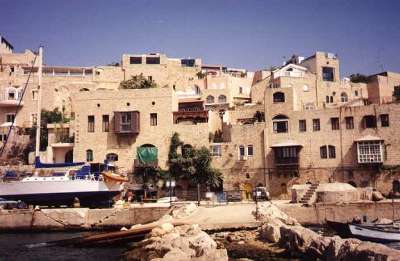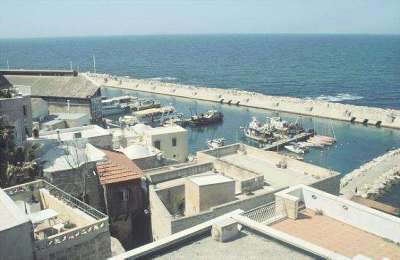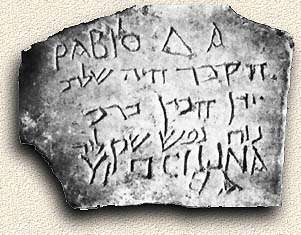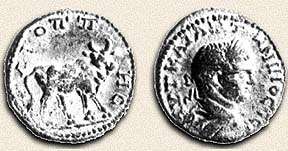Jaffa
By Jacqueline Schaalje
Jaffa, or Yafo as Israelis call it, is one of the most popular sites with visitors of Israel. It carries poetic names, like Bride of the Sea, in a newly published book.
That is not to say that it is a tourist trap. Although the current town has been rebuilt and heavily renovated, it is genuinely charming. The archaeological museum holds some archaeological finds that have been discovered in Jaffa's old city.
 |
History
Jaffa is now a part of modern Tel Aviv, but for millennia it was the only city in the region. The first city was already built around 5000 BCE. The natural harbor, defended by protruding rocks, is one of the oldest in the Levant.
Jaffa has some legendary names and stories attached to it. Its name means beauty in Hebrew ('yoffi'). Legend relates that the town was built right after the Flood, by Japheth, who named the city after himself. When the sons of Noah were scattered in different directions, Japheth chose the sea.
Its earliest appearance is in Egyptian documents. Jaffa was an established city from the 18th century BCE onwards, and was inhabited by Canaanites, who lived on the tel. Jaff's tel still exists, it is the high promontory with the museum on one side and the St. Peter's Church on it. The tel is now covered by a park.
An inscription from Karnak shows that Jaffa came into Egyptian hands during the campaign of Pharaoh Tutmose III, who subsided a string of coastal cities in ancient Canaan. The Egyptian victory over Jaffa is described in another document, the Harris Papyrus. Tutmose's general Djehuty entered the city by a trick, which vaguely resembles that of the Trojan horse. But this time the enemy soldiers were not hidden in a wooden horse, but in 200 sealed baskets. When the baskets were brought into the city, the Egyptian soldiers jumped out and conquered the city.
 |
The Egyptian domination ended when the Philistines landed and ruled the city. Jaffa was thereafter hotly contested between the Philistines and the Israelites - because of the harbor - but mostly it was under Philistine control. The Bible mentions the city as the border of the area of the Dan tribe (Joshua 19:46).
Its only period under definite Israelite control seems to have been under the rule of Solomon. II Chronicles 2:15 relates that the wood for the Temple in Jerusalem was shipped from Lebanon to Jaffa and from there transported to Jerusalem. Also the Second Temple was built with Lebanese ceders (Ezra 3:7).
At some points Jaffa fell under the rule of King Uzziah of Judah (769-733 BCE), but it was soon conquered by the Assyrians. When the Syrian king, Sargon II, died, King Hezekiah of Judah took a chance and organized a revolt in Israel. One of his allies was the king of Ashkelon, who had occupied Jaffa. But the new Assyrian emperor, Sennacherib, swept them from the map: Jaffa is one of the cities which is mentioned as destroyed on the Assyrian prism which commemorates the defeat (701 BCE).
After the Assyrian empire collapsed, Jaffa was conquered by the Babylonians, who banned the Philistine inhabitants just like they did with the Jews from Judah. The Philistines did not return. Later the Persians installed new settlers, and when the Greeks had conquered they turned Jaffa into a Greek city-state with Sidonian colonists.
During this time Jaffa had Jewish inhabitants as well. The book of Jonah, which was written at this time, describes its hero departing from Jaffa. When he drowns he ends up in the belly of a fish and is so saved. The biblical story does not specify the fish, but according to later stories it would have been a whale. Not that there have been whales in the Mediterranean. Anyhow, Jaffa sports a whale sculpture in the south of the old city.
A Greek legend dating from this time associates the city with Andromeda, a beauty who got herself tied to a rock at the port's entrance. The reason why she was tied to the rock has to do with a beauty contest and her good looks invoked the wrath of the sea-god Neptune, who sent a sea monster to make short measure with the girl. Luckily she was rescued by the hero Perseus who killed the monster.
After the Greek rule crumbled, Jaffa became the port of Judah. When the Maccabees revolted against Syria, two hundred Jews from Jaffa were drowned. In revenge, Judas Maccabaeus burnt the harbor. It stayed mainly in Jewish control until Mark Antony gave the city to his mistress Cleopatra, and the city once more became Egyptian.
After her death the Roman emperor gave Jaffa to Herod. But Herod soon set out to build the harbor of Caesarea, to the detriment of Jaffa. During the First Jewish War the city was destroyed almost entirely and its large Jewish community killed (68 CE). It was rebuilt but became small and provincial.
 |
In Arab times, the harbor of Caesarea oozed full of mud and so once more the natural harbor of Jaffa prospered. But it soon became the center of wars between the Crusaders and the Arabs, until finally in 1268 it was conquered by Sultan Baybars who stripped it of timber and marble for his new Cairo mosque. Less than a century later his successors purposely destroyed the harbor and the city to deny any new Crusaders a foothold in the Holy Land.
But again it was rebuilt. During Ottoman times, Jaffa prospered once more, as it imported rice and sugar and exported soap, olive oil, spices and cotton. Vast citrus groves encircled the city.
Jaffa was destroyed by Napoleon who ravaged the inhabitants of Jaffa in his disastrous campaign of Israel in 1799. The St. Peter's Church and monastery are said to stand on the place where Napoleon camped in Jaffa. Even though Napoleon did not leave a single soul living in the town, several statues commemorate his presence.
Some of the main monuments in Jaffa date from Ottoman times, like the clock tower from 1906, meant to mark the anniversary of the Sultan. One of the Jaffa rulers rebuilt the city wall, its fountains and its gates, which led to the main roads to Jerusalem and Nablus, and the al-Mahmudiyya Mosque. The English built the harbor lighthouse.
Soon the city began to spill over its walled boundaries, when Jews immigrated to Israel and the first Jewish neighbourhoods of Tel Aviv (Neve Zedek and Neve Shalom) were built soon after. The Ottoman rulers destroyed the ancient walls drastically in order to settle the new inhabitants in the new 'suburb.'
During Israel's War of Independence, much of Jaffa was destroyed. In 1965 a process of reconstruction began. The inhabitants were evacuated and artists were encouraged to live in Jaffa and reconstruct their own houses. Modern 'old' Jaffa is the result, it is erected in the old style and full of art galleries.
A sculpture in the old town refers to the Jaffa orange, which first entered Israel in the 18th century (imported from Portugal) and that seemed to grow well in the Jaffa area. The sculpture is called the Hovering Orange Tree, in the centre of Old Jaffa. It is supposed to be a symbol of Israel's prosperity, and some see in it a metaphor for the Jewish people, hanging between heaven and earth with their sufferings.
Archaeology
The tel of Jaffa has been excavated during several digs in the last century, but never in its entirety. Most of the finds were brought to the Archaeological Museum, next to the tel.
 |
Because of the many destructions, remains of several periods are almost lacking: from the Late Second Temple period until the early Arab period. From the oldest archaeological layers it becomes clear that Jaffa had a wall and gates, and a rampart leading up to the gates. These were destroyed at the beginning of the 13th century BCE, around the time when the Philistines would have conquered the city. On one of the doorjambs of the Bronze Age gates is an inscription with the name Ramses II, the Egyptian Pharaoh.
From the Philistine presence dates citadel made of mud brick walls, and a temple with two columns supporting the roof, of which only the bases were left. On the floor of the temple a lion skull was found with fierce teeth and a scarab seal near its teeth. Lion skulls were found in other sites as well, for instance in Dan. In Jaffa there seemed to have been a lion cult. More details about it are not known.
From the Greek era dates an inscription which says that Ptolemy IV ruled Israel from Egypt, and coins were found with the Greek name of Jaffa, 'Joppa.'
 |
Near to the sea an excavation uncovered a three-roomed catacomb under a private house. Inside there was a burial cave, containing several graves from the Persian until the Byzantine periods. Some have finely carved stone doors.
In the Jewish cemetery at Abu Kabir (Giv'at Herzl) there are many graves as well, dating from the Late Roman times until the Byzantine era, which give an impression of the Jewish community of the Mishnaic-Talmudic period. The cemetery was already dug out in the nineteenth century by a French archaeologist. Tombstones bear inscriptions in Hebrew, Aramaic and Greek. Two additional burial caves were discovered in 1991.
No comments:
Post a Comment